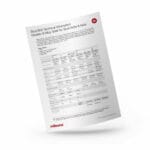Ever wondered if your magic mushrooms have a “best by” date? It’s a crucial question, especially given the importance of responsible use and potential safety concerns. This comprehensive guide delves into the intricacies of magic mushroom storage, providing clear, factual information to help you maximize potency and minimize risks. We’ll cover everything from recognizing spoilage to advanced storage techniques, addressing the various forms of magic mushrooms – fresh, dried, and powdered. Disclaimer: Laws concerning magic mushrooms vary significantly. This information is for educational purposes only and does not constitute legal or medical advice. Always consult local regulations and a qualified professional for any legal or health concerns.
Fresh Fungi: A Fleeting Treasure
Fresh magic mushrooms are delicate and highly perishable, much like ripe berries. At room temperature, they likely won’t last more than a day or two before beginning to decompose. Refrigeration can extend their lifespan to approximately five days, but even then, vigilance is key. Store them in a breathable container like a paper bag in the refrigerator, ideally between 33-40°F (0.5-4°C), away from strong-smelling foods. Inspect them diligently for any signs of spoilage – discoloration, sliminess, or mold – before consumption. If anything seems amiss, discard them. For a longer shelf life, drying is your best approach. Wondering about the lifespan of other fermented products? Discover more about whether kombucha expires.
Dried Delights: Preserving the Magic
Drying significantly extends the shelf life of magic mushrooms, much like drying herbs for preservation. While their peak potency is typically within the first month after drying, proper storage can maintain their psychedelic effectiveness for up to a year, perhaps even longer according to some, like Giordano from Schedule35 who suggests “dried mushrooms can last for over a year, estimating that, on average, they last about a year and a half.” However, ongoing research suggests that potency gradually declines over time even with optimal storage. The key is to create a protective environment: an airtight container, preferably opaque, filled with desiccant packs and stored in a cool, dark, and dry place. Vacuum sealing offers superior protection against moisture, light, and air, potentially extending potency for years. Freezing is another viable long-term option (ensure they’re thoroughly dried first), although it doesn’t completely halt degradation.
Powdered Psilocybin: Maximizing Shelf Life
Grinding dried mushrooms into powder or encapsulating them further extends their shelf life, similar to preserving ground coffee. This method provides a stable environment, shielding the psilocybin from external elements. Powdered mushrooms generally maintain potency for 6-12 months, possibly longer with meticulous storage in an airtight container within a cool, dark environment. Remember, the finer the powder, the greater the surface area exposed to air and moisture, potentially accelerating degradation.
Recognizing Spoilage: When to Say Goodbye
Even with the best storage practices, spoilage can occur. Familiarize yourself with the warning signs:
- Discoloration: Darkening, unusual hues, or spots.
- Texture Changes: Sliminess, mushiness, or excessive dryness.
- Mold Growth: Any visible mold is a clear indication of spoilage.
- Unpleasant Odor: A musty or foul smell.
If any of these signs are present, discard the mushrooms immediately. Prioritizing safety is paramount.
Potency Degradation: The Unseen Expiration
While magic mushrooms don’t have a strict expiration date, their potency inevitably declines over time. Psilocybin, the psychoactive compound, gradually degrades due to several factors:
- Light Exposure: Light breaks down psilocybin molecules.
- Heat: Accelerates decomposition processes.
- Air Exposure (Oxidation): Affects the active compounds.
- Moisture: Encourages mold and bacterial growth.
The “eight-hour rule” suggests that every hour spent in suboptimal conditions equates to a potency loss equivalent to eight hours of proper storage. Therefore, minimizing exposure to these elements is crucial. Future home testing kits may eventually allow for precise psilocybin measurement, enabling more accurate dosing even with aged material.
Advanced Storage Strategies: Protecting Your Stash
For those seeking to maximize long-term potency, consider these advanced techniques:
- Vacuum Sealing: Removing oxygen creates an inert environment that significantly slows degradation.
- Desiccant Packs: Absorb moisture, creating an ultra-dry environment inside the storage container.
- Optimal Temperature and Humidity Control: Research suggests that specific temperature and humidity levels further enhance preservation.
Slightly Past Prime: Assessing the Risks
If your dried mushrooms are slightly past their prime but show no visible signs of spoilage, they are probably still safe to consume, although the potency will likely be reduced. This can make accurate dosing challenging, potentially leading to a less intense or unpredictable experience. Harm reduction is key – when in doubt, err on the side of caution and discard them. Concerned about drug screenings? Learn more about how Suboxone shows up in a urine test.
Microdosing and Expiration: A Special Consideration
While microdosing involves smaller amounts of psilocybin, the same storage principles apply. Even minor potency fluctuations can impact microdose effectiveness. Consistent storage is essential for maintaining the desired subtle effects. Research into the long-term effects of microdosing with aged material is still underway.
Conclusion: Responsible Storage for Safe Experiences
Preserving the potency and safety of magic mushrooms hinges on responsible storage practices. By understanding the factors that contribute to degradation and implementing appropriate storage techniques, you can ensure a consistent and safe psychedelic experience. Remember, prioritizing safety and respecting legal regulations are essential aspects of responsible use.
- Fahaka Pufferfish Care Guide: Tank Setup, Diet, & Behavior - December 15, 2024
- Fahaka Puffer Care Guide: Expert Tips for Keeping Nile Puffers - December 15, 2024
- Decoding the F1BB Goldendoodle: Temperament, Coat, Health, and More - December 15, 2024














